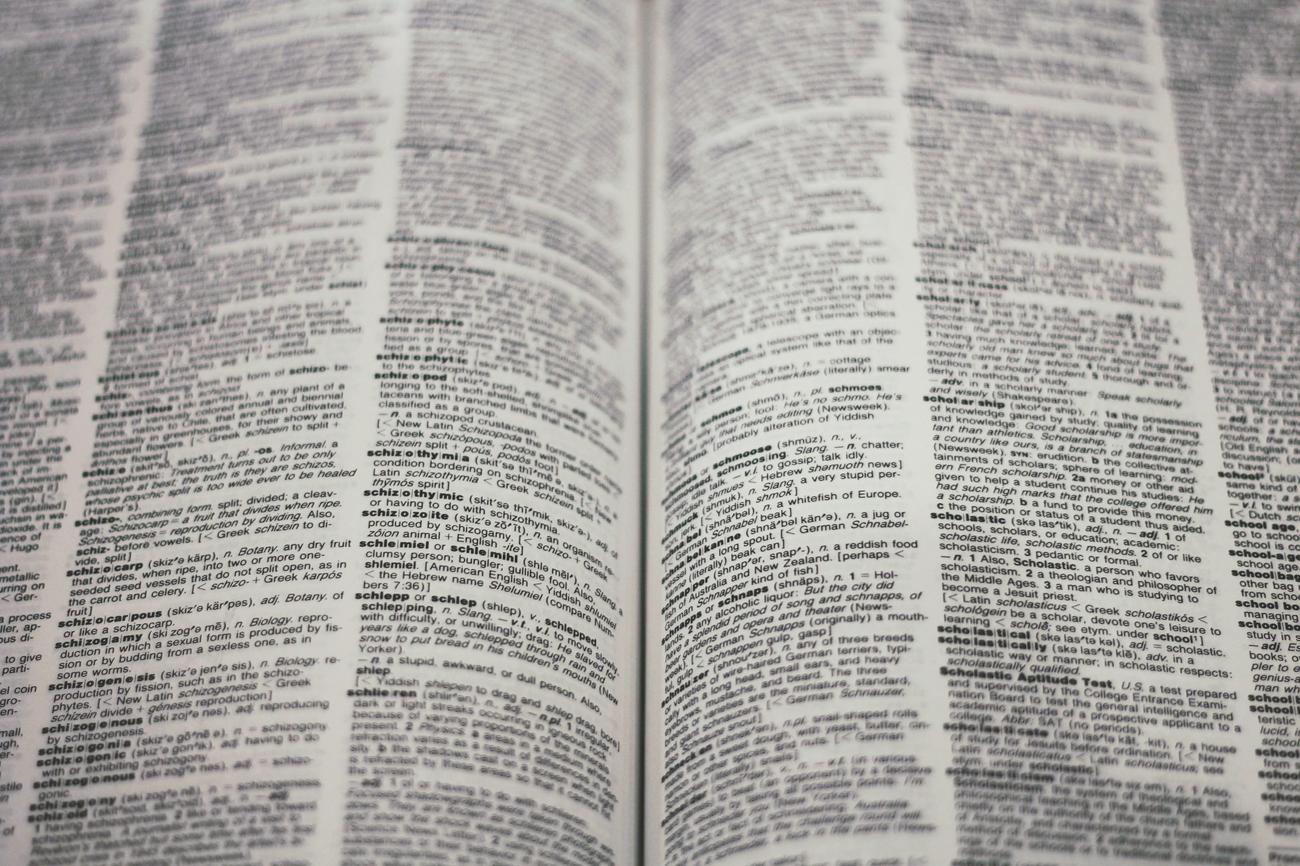Intriguing Facts About Translation: Language Expert Reveals

As the world becomes increasingly interconnected, the importance of translation cannot be overstated. It is the key that unlocks communication barriers and allows ideas, cultures, and knowledge to flow freely. However, behind the scenes of this intricate craft lies a mesmerizing world of facts and anecdotes that often go unnoticed. Today, we delve into the realm of translation and explore two captivating truths: the world’s most translated book and a staggering mistake that cost a multinational bank a jaw-dropping $10 million. Join us as we embark on a fascinating journey through the captivating universe of translation, guided by a seasoned language expert with a passion for unraveling the mysteries of words.
Facts about Translation
Translation is a fascinating field that encompasses much more than simply converting words from one language to another. As a language expert with years of experience in the industry, I have come across some intriguing facts about translation that shed light on the intricacies and challenges within this captivating profession. So, let me take you on a journey through some lesser-known facts about translation!
1. Language Diversity: Did you know that there are over 7,000 languages spoken worldwide? Each language carries its own cultural nuances, idioms, and linguistic intricacies. Translators not only need to know the languages they work with but also have an in-depth understanding of the cultural context to effectively convey the message from one language to another.
“The rich tapestry of languages worldwide is a testament to the incredible diversity of human communication.”
2. Machine Translation Advancements: Rapid advancements in technology have greatly impacted the translation industry, with machine translation making significant strides in recent years. While machines can help with quick translations, they still struggle when it comes to preserving the nuances and subtleties of language. Human translators, with their inherent understanding of cultural nuances, continue to play an indispensable role in ensuring accurate and context-specific translations.
“Although machines have come a long way in translation, they have yet to grasp the finesse of human expression.”
3. The Power of Translators: Translators are not merely intermediaries between two languages; they are custodians of literature and knowledge. They play a crucial role in preserving literary works by bridging the linguistic gap and allowing stories to transcend borders. Without translators, we would be confined to reading only works written in our native language, missing out on the diverse range of literature that exists in the world.
“Translators are the unsung heroes who open the doors to a world of literature that might otherwise remain inaccessible.”
4. The Most Translated Book: The Bible holds the esteemed record for being the most translated book in the world. Its profound influence and widespread distribution have compelled translators to bring its teachings to people of different cultures and languages throughout history. It serves as a testament to the enduring power and significance of translation in spreading religious and philosophical principles.
“The Bible’s translation into numerous languages exemplifies the universal desire for shared wisdom and understanding.”
5. Top Translated Languages: When it comes to the most translated languages globally, English takes the top spot due to its widespread usage as a lingua franca. Following closely behind are French, German, Russian, and Italian. These languages have significant global influence, whether in literature, politics, or commerce, making them essential for international communication and cultural exchange.
“English, French, German, Russian, and Italian: languages that bridge gaps and facilitate global conversations.”
In conclusion, translation is a dynamic and vital process that enables communication and understanding across cultures. From the intricate workings of ribosomes in cellular translation to the legendary story of the Tower of Babel, the world of translation is filled with intriguing facts and captivating insights. The translator’s skill lies not only in their ability to convey meaning accurately but also in their deep understanding of cultural context. So, the next time you come across a translated text, take a moment to appreciate the intricate work that goes behind making it accessible to you.
Fact: The world of biology is full of fascinating discoveries and processes. When it comes to translation, there are numerous interesting facts that will leave you in awe. From understanding how proteins are synthesized to the role of ribosomes, translation biology opens up a whole new world of exploration. If you’re curious to dive deeper into this topic, click here to discover some incredible facts about translation biology: facts about translation biology.
Mathematics also has its own translation secrets. Did you know that translation is not limited to biology? In math, translation plays a significant role as well. It involves moving figures from one position to another without altering their size or shape. If you’re intrigued to learn more amazing facts about translation in math, click here: facts about translation in math.
But translation doesn’t stop there. The process of DNA replication also involves an intriguing translation phase. As genetic information is transformed into functional proteins, a complex mechanism takes place. Curious about the interesting facts surrounding translation during DNA replication? Look no further and click here to uncover these captivating details: interesting facts about translation during DNA replication.
So, whether it’s biology, mathematics, or DNA replication, translation holds a world of wonders. Explore these fascinating topics by clicking the links above and prepare to be amazed by the intricate processes that shape our understanding of life and mathematics.
The World’s Most Translated Book is The Bible
Did you know that The Bible holds the title of being the most translated book in the world? This ancient text has made its way into an astonishing number of languages, making it accessible to people from vastly different cultures and backgrounds. With at least one book of the Bible translated into an astounding 3,384 languages, it’s clear that its significance transcends the barriers of time and language. The New Testament alone has been translated into 2,191 languages, while the combined Old and New Testaments have been translated into 531 languages. Truly, The Bible is a testament to the power of translation and its ability to bridge gaps and unite people around the globe.
“The Bible’s unparalleled translation into thousands of languages showcases the profound impact of language and the written word.”
When delving into the translation of The Bible, it’s essential to consider its original languages. The Bible was originally written in Hebrew, Greek, and Aramaic, presenting unique challenges for translators as they strive to convey the intended meaning and essence of the text in different linguistic contexts. To date, the full Bible has been translated into an impressive 704 languages, while the New Testament alone has found its way into 1,551 languages. This immense linguistic feat highlights both the dedication of translators and the timeless significance of The Bible’s teachings.
“The translation of The Bible reflects the remarkable linguistic capacity and passion of translators across the world.”
The translation of The Bible is a testament to the dedication and expertise of translators who navigate a myriad of linguistic and cultural intricacies. It’s fascinating to ponder the incredible impact of their work, as they enable individuals to access the wisdom and teachings present within this timeless text regardless of the language they speak. The act of translation allows stories, lessons, and spiritual guidance to transcend borders, cultures, and generations, fostering a greater understanding and connection among humanity.
“Translators are the unsung heroes behind the scenes, ensuring that knowledge and literature can cross linguistic borders and reach people from all walks of life.”
While The Bible holds the record for being the most translated book globally, it’s worth noting the other languages that have received significant translation efforts. English, being a widely spoken global language, naturally leads the pack, followed closely by French, German, Russian, and Italian. These languages have played prominent roles in literature, politics, and commerce, making them influential on an international scale. Their widespread translation demonstrates the enduring importance of making information available to a diverse range of people.
“Just as The Bible transcends linguistic boundaries, the translation of various languages reflects the far-reaching impacts of literature and the power of communication.”
The translation of The Bible remains a captivating and awe-inspiring endeavor, shedding light on the remarkable capacity of language to connect individuals on a global scale. From its extensive reach across thousands of languages to its origins in Hebrew, Greek, and Aramaic, The Bible serves as a testament to the profound work of translators. Their dedication and expertise allow the timeless wisdom and teachings of this ancient text to be accessible to countless individuals, fostering understanding, unity, and spiritual growth.
“In an ever-diverse world, the translation of The Bible signifies the beauty of language, culture, and the shared human experience.”
A Single Translation Mistake: A Costly Lesson for a Multinational Bank
In the ever-connected global marketplace, accurate translation is paramount for businesses seeking to expand their reach and communicate effectively across borders. However, even the smallest oversight or error in translation can have severe consequences, as one multinational bank discovered to their dismay.
Imagine the scenario: a prestigious financial institution, trusted by countless clients around the world, embarks on a high-stakes marketing campaign to promote its services in a foreign market. Months of meticulous planning, strategizing, and crafting the perfect message culminate in the final phase: translating the marketing materials into the target language.
How Interpreters Navigate the Complexity of Juggling Two Languages Simultaneously
[youtube v=”cXNTArhA0Jg”]
Introduction
In the realm of diplomatic meetings and international conferences, the role of interpreters is critical in bridging language barriers and facilitating effective communication. However, the task of simultaneous interpretation is far from simple. This article explores the intricacies of interpreting and sheds light on the immense skills and training required to deliver accurate translations in high-pressure situations.
The Skill and Training of Interpreters
To become a conference interpreter, fluency in two languages is just the starting point. Extensive training, which spans over two years, is necessary to expand vocabulary and hone the skills needed for this demanding profession. Interpreters begin by listening attentively to the speaker and meticulously repeating each word in the source language. Gradually, they learn to paraphrase and adapt the speaker’s words into the appropriate context. The process of mastering simultaneous interpretation creates neural pathways in the interpreter’s mind over time, making the task second nature.
Techniques to Ensure Accuracy and Speed
Interpreters employ various techniques to keep pace with the speaker and overcome challenges. They may abbreviate lengthy terms, choose more general terms, or use visual aids to aid in comprehension. When faced with unfamiliar terms or accents, they rely on their extensive training and experience to find swift solutions. Quick thinking and adaptability are paramount, as unexpected surprises can occur at any moment. To maintain composure, interpreters diligently prepare for meetings, studying relevant materials and creating dictionaries of specialized vocabulary beforehand.
The Role of Teamwork and Coordination
Simultaneous interpreting is a collaborative effort, with interpreters typically working in pairs. While one interpreter translates the dialogue in real-time, the other assists by conducting research, locating documents, and searching for relevant information. Due to the intense concentration required, the roles are rotated approximately every 30 minutes. The success of interpretation hinges on the seamless coordination and technique employed by the team.
The Importance of Accurate Translation
Language is intricate, and the consequences of mistranslated or misunderstood words can be severe. As Margaret Atwood wisely stated, “War happens when there are no more words.” Conference interpreters understand the gravity of their role and diligently work behind the scenes to ensure flawless communication. Through their expertise, they strive to prevent misinterpretations that could potentially disrupt relations between nations and organizations.
Conclusion
The role of interpreters is indispensable in fostering effective communication across different languages and cultures. Their specialized training, linguistic agility, and quick thinking enable them to navigate the complexities of simultaneous interpretation successfully. Through their dedication and meticulous attention to detail, interpreters play a crucial role in promoting understanding and unity in an increasingly interconnected world.
“Interpreters are the unsung heroes bridging the gaps between nations, ensuring that words, ideas, and intentions are accurately conveyed.”

FAQ
Question: How does translation take place on ribosomes?
Answer: Translation takes place on ribosomes, where messenger RNA molecules are read and translated into amino acid chains.
Question: What is the relationship between translation and transcription?
Answer: Translation follows transcription, in which DNA is decoded into RNA.
Question: Can you explain the legend of the Tower of Babel and its connection to translation?
Answer: The Tower of Babel is a legendary story that highlights the challenges of translation and language diversity.
Question: How many languages are spoken worldwide?
Answer: There are over 7,000 languages spoken worldwide.
Question: Has machine translation made any advancements recently?
Answer: Yes, machine translation has made significant advancements in recent years.
Question: What role do translators play in preserving literary works?
Answer: Translators play a crucial role in preserving literary works by translating them into different languages, making them accessible to a wider audience.
Question: Which book holds the record for being the most translated?
Answer: The Bible is considered to be the most translated book.
Question: What are the most translated languages in the world?
Answer: The five most translated languages in the world are English, French, German, Russian, and Italian.
Question: Can you provide some examples of translation mistakes that had significant consequences?
Answer: Yes, there have been notable translation mistakes, such as a major translation error by HSBC costing the company $10 million and KFC’s slogan mistranslation in Beijing from “Finger Lickin’ Good” to “Eat Your Fingers Off.”
Question: Are there any interesting translation facts mentioned in the article?
Answer: Yes, the article mentions several intriguing translation facts, including the existence of only five known people on Earth who are the last speakers of their languages.
- China II Review: Delicious Food & Speedy Service - April 17, 2025
- Understand Virginia’s Flag: History & Debate - April 17, 2025
- Explore Long Island’s Map: Unique Regions & Insights - April 17, 2025
















